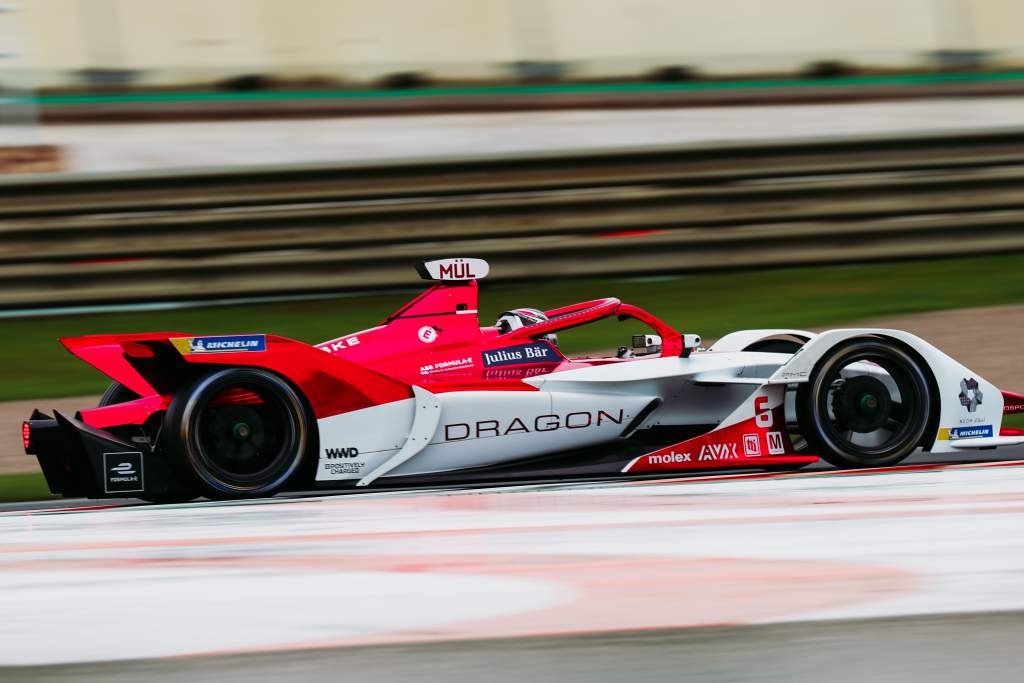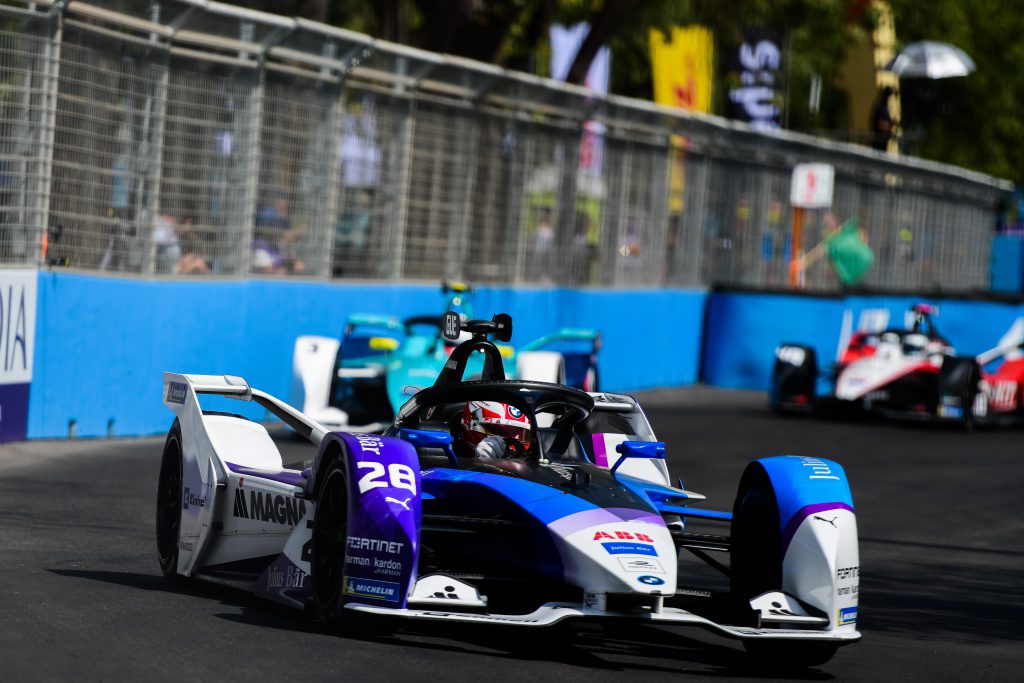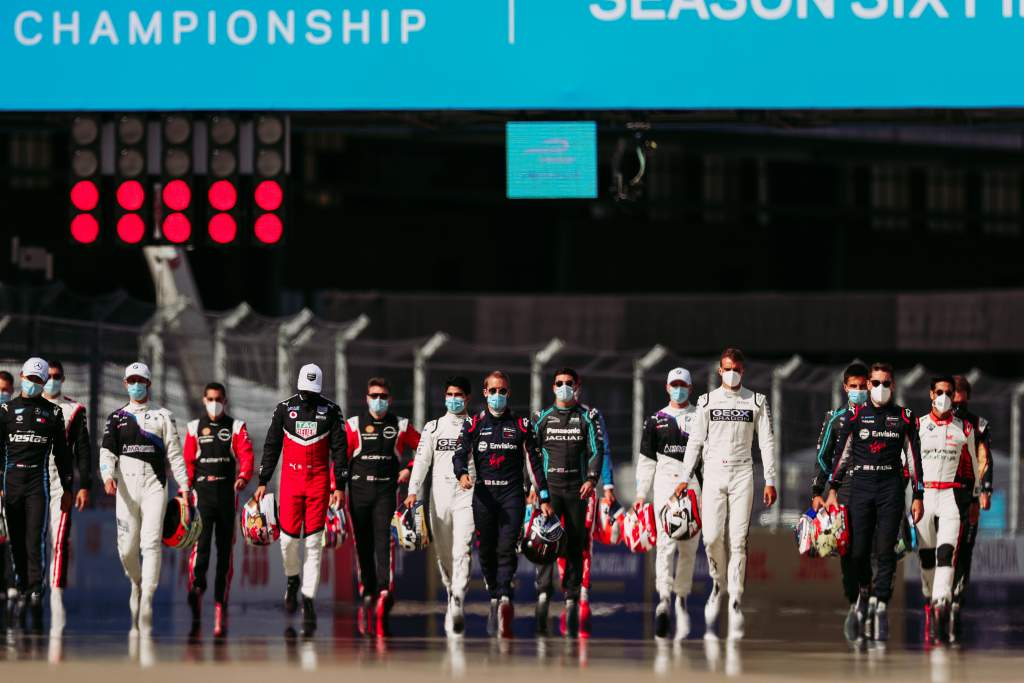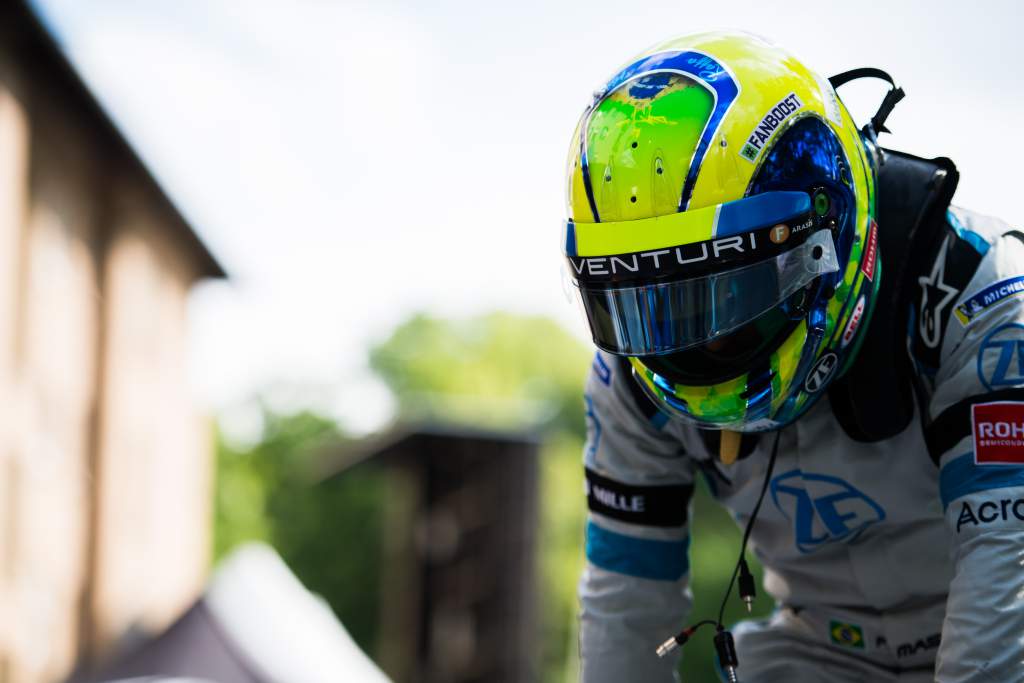until Abu Dhabi Autonomous Racing League

Apart from getting racing activities restarted, the in-trays of Formula E CEO Jamie Reigle, the FIA’s Frederic Bertrand, and a host of other administrators in the all-electric championship are jam-packed with one topic at present. Cost caps.
Future team and manufacturer auditing (the two are very different) as a subject is dry as old chips. Nevertheless, it is a crucial topic for the immediate and future health of Formula E, and its current status is critical.
Final and formal cost-cap figures are expected imminently from the FIA and the independent external adjudicators that it consults.
Formula E teams mainly started the seeds of financial management initiatives back in 2019. This is when they got together and started to propose capping and cutting measures, as well as identifying areas where future spend could happen and thus nipping it in the bud before it did.
They were the architects, and latterly FEO and the FIA ran with the momentum, spurred by a crippling pandemic which motivated them to implement biannual homologations, parts reductions and other measures.
In a sense though these are the easy parts of the fiscal riddle. The more difficult procedures, by far, are how to find a fair and consistent cost cap method for manufacturers, because it is they that are an intrinsic part of the Formula E landscape now and tomorrow.
Manufacturer Cap
 A manufacturers cost cap is not likely to be officially, practically and fully firmed up until the second homologation of Gen3 in 2024.
A manufacturers cost cap is not likely to be officially, practically and fully firmed up until the second homologation of Gen3 in 2024.
That is because it is already too late to apply one now because the first homologation of Gen3 is in the prototyping design stage and has been worked on by manufacturers for months, irrespective of whether they commit to Gen3 or not. And remember that several are still genuinely undecided and awaiting board approval.
The difficulty is in how to introduce a cost cap when there is such a plethora of business models across the different, now and future, manufacturers in Formula E.
It is well-known, for example, that some of the German manufacturers inter-charge between their various departments. If one is using a specific department for design specification, it will be charged from another division within the group and so on.
Whereas a manufacturer such as Dragon Penske or NIO333 would use a variety of suppliers where they negotiate a price from their technical network. Simple.

That is a basic description of the conundrum but how do you start to align the two strategies when they are so far apart?
Although there is across-the-board consensus between manufacturers that cost caps are needed, it has to be fair and practical for all. Yet some believe it is almost an impossibility to get a cost cap that will reflect a fair and equitable procedure. Their argument stems from the technicalities, such as how VAT would be charged across departments, how it could be audited accurately and specific Intellectual Property legislation.
BMW was a good case study regarding this before it pulled the plug on yet another of its racing programmes last month. Its powertrain was not designed or built by its motorsport division – instead it was designed and built by its BMW i-drive automotive concept facility.
That was because it was so close to what they were doing from an automotive perspective and shows another strand in such a diversity of business model.

What this means for forming a manufacturer cost cap is that it needs a lot of working out to understand how it could be applied fairly and made equal from a sporting point of view.
For the manufacturers it is further complicated by reductions in personnel costs. That is where caution has to be applied because major OEMs can’t just fire people due to stringent employment laws, particularly in Germany.
A cost control is ultimately not only measured by the regulations and the calendar but by also the gains manufacturers can get for their financial outlay.
If manufacturers can only gain 0.001% per €10m for example, they plainly are not going to bother. But if they spent €10m and got 10% back then clearly they would do it. For Formula E’s future prosperity, that is a crucial equation.
It’s all about return on investment (ROI). This is where, despite what heads of manufacturers might want you to believe, you have to remember the huge marketing element to why they go racing. They aren’t doing it wholly for the sport or the sustainability messaging. They are doing it to sell their products.
The ROI in terms of whatever the cost cap budget is still has to function. In short, it’s not just about how much you put in. It’s also how much you get back out in marketing and performance.
The Stars and Their Paydays
 The Race addressed the topic of driver salaries at length last February when initial talks of cost-caps started to form. Now that the crystallisation process of managing driver payment has to start, what will drivers face as they enter the next phase of Formula E’s development?
The Race addressed the topic of driver salaries at length last February when initial talks of cost-caps started to form. Now that the crystallisation process of managing driver payment has to start, what will drivers face as they enter the next phase of Formula E’s development?
Bold statistics tell us that Formula E paydays have increased hugely since its 2014 inauguration but in the last year have shown signs of plateauing.
It’s a human cost which in recent years has been one of the biggest increases on a budget line item of them all. The evidence is overwhelming so it has to be capped – otherwise it’s worthless in the grander scheme of cost-capping.
Another big topic for the cost-cap creators is going to be if driver salaries are specifically separate to the team limit.
The market was shifted by a few anomalies, such as Formula E being seduced by Felipe Massa’s perceived worth in 2018. That over-egging of experience and so-called star-power was a key approach, which was particularly prevalent as Gen1 changed to Gen2 racing.

F1 has recently gone down the route of separate driver capping but what if the ‘Massa syndrome’ kicks in again and the promoters smell a Romain Grosjean or a Valtteri Bottas opportunity in the near future? Surely, they will want to keep the door open to allow one of those to drop.
Yet manufacturers surely cannot go to board members and say, ‘listen, everything is now capped and we can deliver ‘x’ to you for an ‘x’ spend. Oh, but the only thing which isn’t capped are the drivers salaries, so we need €6m for ‘Carlos Fandango Jr’s’ three year deal, ok?’
That will get short shrift but in the event a manufacturer decides to chip in for a star, then how does that distribution happen? It’s another question which as yet is unanswered.
In reality, influential manufacturer decision-makers aren’t going stand for any of that because anything outside of the cap really just waters it down.
At least Formula E will be able to see how Formula 1’s structure works in 2021 before its own 2021/22 team cost cap kicks off.
As it stands the F1 cost cap omits the drivers and top three executive remunerations. From 2023, the team’s cap is set be accompanied by a $30m ‘soft cap’ on its line-up of drivers.
It’s a crucial and complex topic in Formula 1 where salaries for talent will ultimately create a see-saw situation for teams, of whether they spend on car development or human talent.
In Formula E it will be no less multifarious because of the manufacturer element, the enhancement of world championship status and the increasing importance of electric racing as a major marketing tool.


